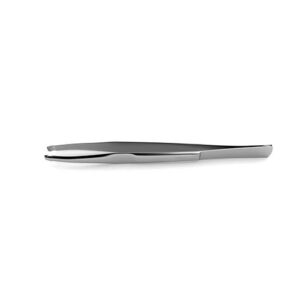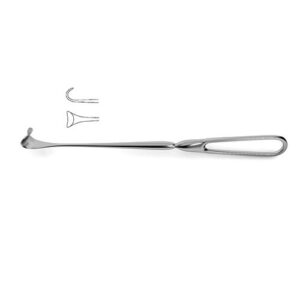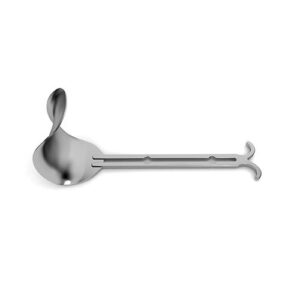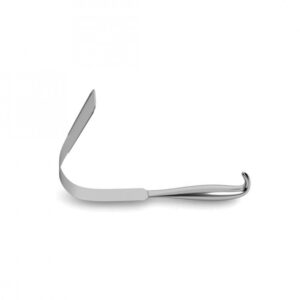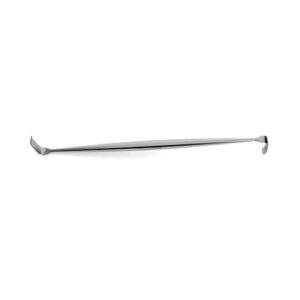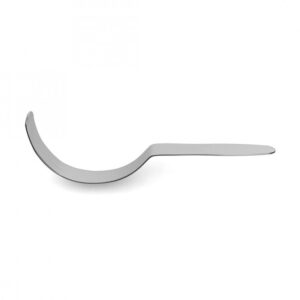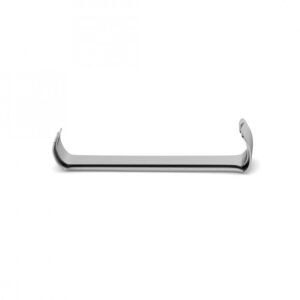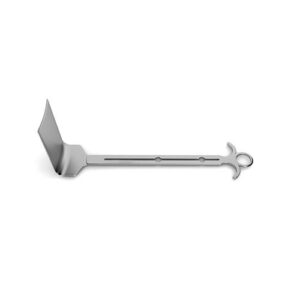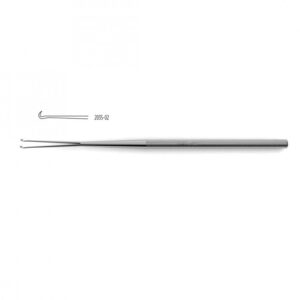| Name | Cushing Vein Retractor |
| Lead Time | Lead time advised within 48 hours of order placement. |
| Specialty | General Instruments-Hooks & Retractors – Retractors |
| Material Finish | Stainless Steel |
| Grade | Premium Operating Room |
| Units of Measurement | Each |
| Manufacturer | seemab surgical |
| Sterility | Non-Sterile |
| Usage | Reusable |
Cushing Vein Retractor
Cushing Vein Retractor
Cushing Vein Retractor has a sharply curved blade and is a popular retractor used during neurosurgery or as rib spreaders. In this way, the ribs or the tissues that are held can be pulled and kept away from the surgical area. Depending on the situation, this instrument is available in different lengths and widths.
SKU:
VI-01-503
Category: Hooks & Retractors
Description
Shipping & Delivery
Related products
Balfour Standard Center Blade – For Fixed System
For balfour retractor systems w/ fixed side blades
Balfour Supra-Pubic Center Blade is available in different sizes to accommodate different surgical procedures and patients. The blade is curved and has lips around the edges to assist in operations such as a Suprapubic Cystostomy. This center blade may also be detached when used with the Balfour Retractor Systems.
Glass Abdominal Retractor
Abdominal Retractor
6" (15.2 cm) x 3-1/4" (8.3 cm), 9-3/4" (24.5 cm)
B.E. Glass Abdominal Retractor contains a flexible blade with a strong curve that is affixed to a handle for gripping purposes. This type of retractor is intended to be used during surgeries that require retracting or exposing the organs in order to provide better accessibility for the surgeon.
Davis Retractor
Double-ended, 5.0 mm x 16.0 mm & 8.0 mm x 21.0 mm blades, 5-1/2" (14.0 cm)
Davis Retractor is a stainless steel instrument that is double-ended and has opposing blades on either end. This retractor is able to divide and keep edges of an incision open. This instrument is also protected by the seemab surgical manufacturer warranty on defects in materials and workmanship.
Deaver Retractor – Flat Handle
Deaver Retractor - Flat Handle
flat handle, flexible
Deaver Retractor with a flat handle contains a flexible curved blade that is offered in two different widths and lengths depending on the surgical requirements. During general operations, specifically the involvement of the abdominal or chest cavity, this retractor can allow the surgeon to move one side of the incision to access the area that needs attention. If a deeper section needs to be accessed, the longer and wider blade may be more beneficial.
Farabeuf Retractor
Farabeuf Retractor
double-ended, set of 2
Farabeuf Retractor comes in a set of two and is a double-ended instrument. This retractor has curved, flat blades on each end and can be obtained in a 6" length or a "baby" size of 4 ?." Its primary function is to draw back tissues that reside in deep body cavities.
Balfour Standard Center Blade – For Detachable System
Detachable System
for detachable balfour retractor systems
Balfour Standard Center Blade is designed to be used with the detachable Balfour Retractor Systems. This blade is offered in two different sizes and contains a curved blade with lips on the outer edge to keep an incision open. The handle of this center blade is fenestrated in the middle and includes placement holes so that it can spread to different sizes.
Balfour Extra-Deep Center Blades
For balfour retractor systems w/ fixed side blades, 2-3/4" wide x 4" deep
Balfour Extra-Deep Center Blades consists of a 4" deep blade that is curved at a right-angle. This blade may be intended for larger patients or for accessing deeper areas of the abdominal cavity so that they can be held in place. Another feature of this center blade is that it contains loop holes in the center slot so that it can provide different spreads.
Barsky Skin Hook
Knurled handle, 6" (15.2 cm), sharp
Barsky Skin Hook can be used in various medical procedures where skin or soft tissue needs to be maneuvered, such as procedures involving plastic surgery or ophthalmology. The knurled handle contributes to a better grip for the surgeon, and the hook at the end contains a sharp prong that can be single or double. The high quality stainless steel used to produce this instrument may help to prevent bacteria from adhering to its surface during an operation.


